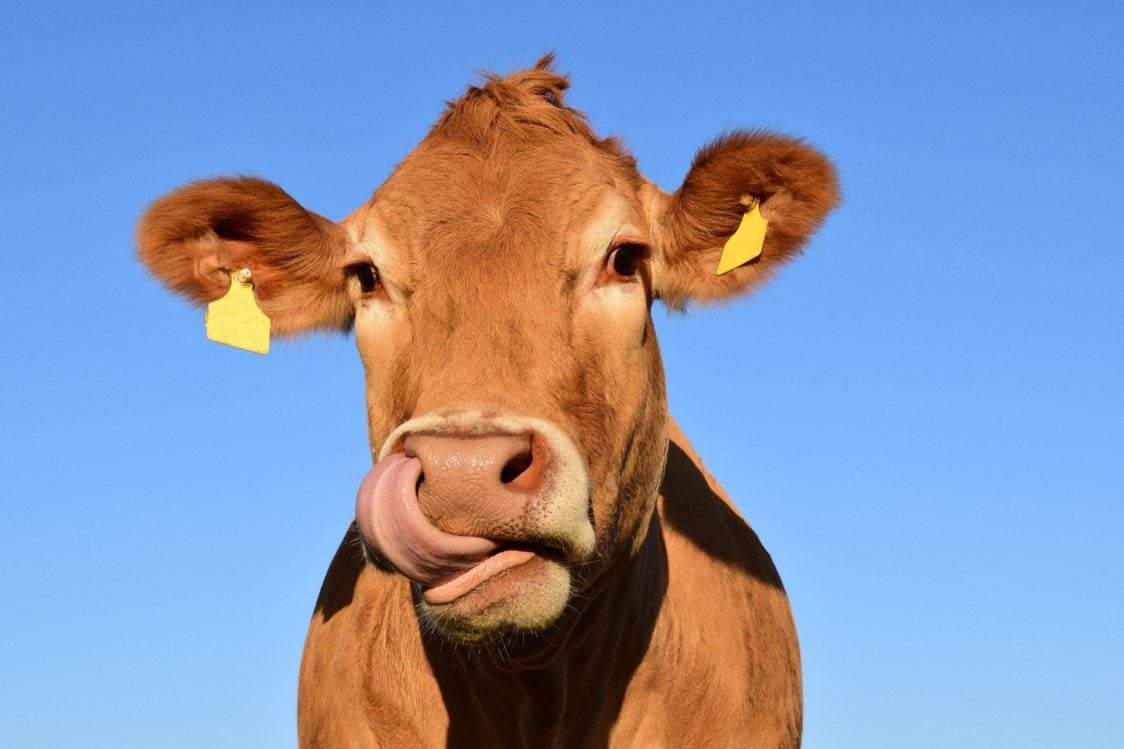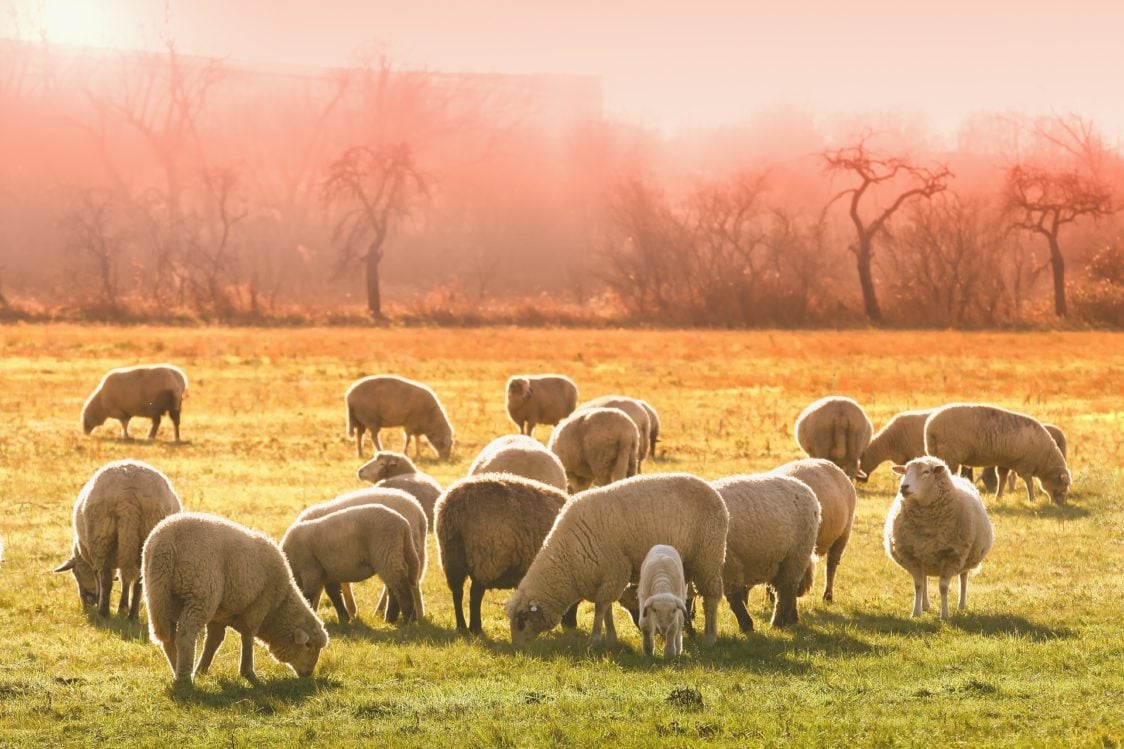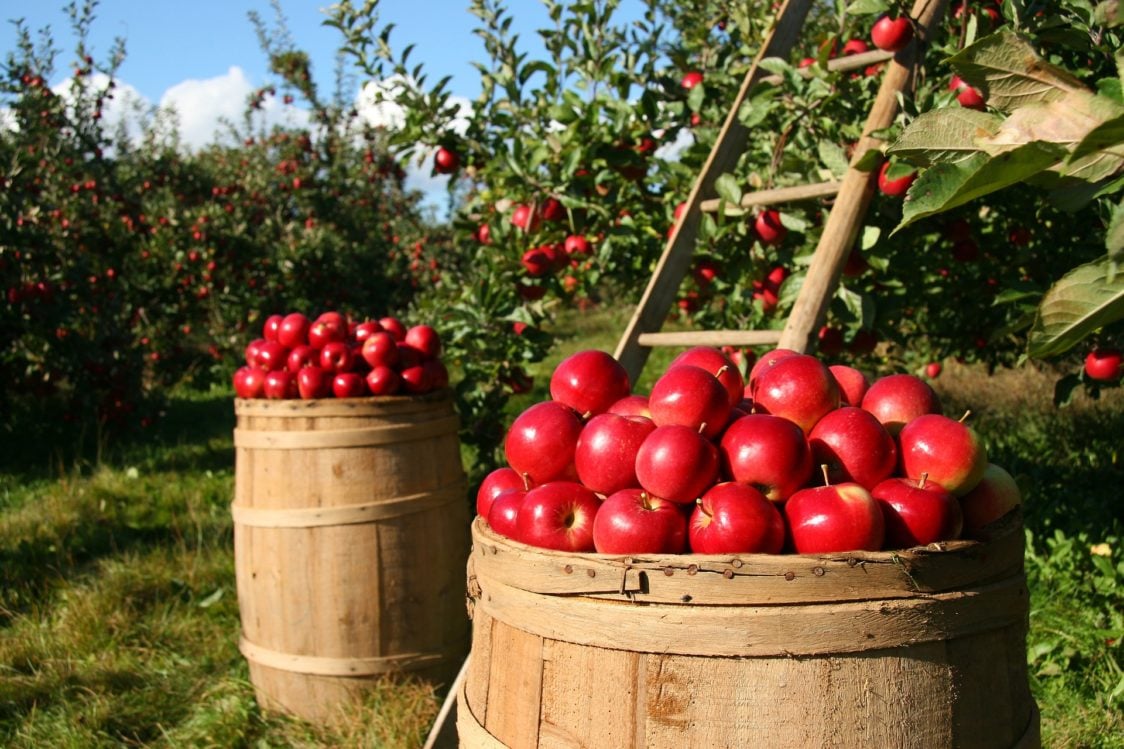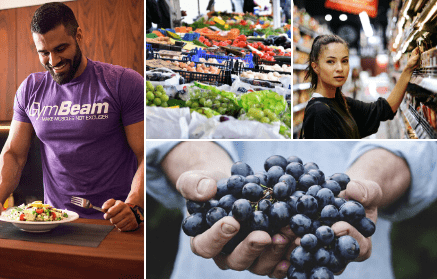Table of Contents
The production of bio and organic food has been experiencing a big boom recently. In the pursuit of a healthy lifestyle and a well-produced diet, products without various chemical interventions, hormones or GMOs are especially sought after. In order to say that vegetables or fruits are bio or organic, you need to meet certain conditions. However, is the consumption of organic food really healthier, and does it not bring certain risks and disadvantages?
Organic food – what does it actually mean?
The term “organic” is more popular in the US and the term “BIO” will probably be more familiar to Europeans. The label “bio” or “organic” is important to many people, but do you know the real difference in the cultivation and breeding of common foods and organic products?
Organic food in the USA
The label “organic” is regulated, and the conditions for this term must be met. In the US, this means that crops are grown without GMOs, synthetic pesticides or fertilizers based on petroleum or sewage sludge. In the case of animals kept for meat and their products, organic farming must contain organic feed and allow the animals to move outdoors. In addition, they must not be given growth hormones, antibiotics and animal by-products. [1]

Farmers cannot arbitrarily label their products “organic” just because they care for crops and animals with love. In the United States, if a food or beverage product is labeled as “organic,” that means that the product has been grown, produced, inspected, and certified to be in compliance with the organic standards of the National Organic Program (NOP), a program of the US Department of Agriculture (USDA). Products must meet the standards of this program, which include pesticides, fertilizers, bioengineering and radiation, antibiotics and growth hormones, as well as sustainable practices. There are three levels of organic products in the United States [2]:
- 100% Organic: 100% of ingredients are organic, processing is 100% organic.
- Organic: 95% or more of ingredients are organic, some USDA-approved chemical additives may be used in processing.
- Made with Organic Ingredients: Certain ingredients are organic. This label statement is not a USDA standard labeling statement and cannot be used outside of the Ingredients Panel on the label. However, it can be made if a USDA-approved certifying agent has verified the claim that some ingredients are organic.
The USDA doesn’t really give the organic “stamp” for nothing, and it’s not enough that you don’t use synthetic fertilizer for vegetables, or that the cows are kept “in the air.” The regulations also cover pest and weed control or soil quality. As for the soil, you cannot consider it “virgin” from day to day and declare it suitable for organic crops. You will only receive a stamp if the prohibited substances have not been used on the soil 3 years before collection. In the case of organic meat, the living conditions of the animal must be adapted to their natural behavior. Organic beef is from cows that have had the opportunity to graze on pastures and feed them organic food without hormones and antibiotics. [3]

Organic food in the EU
As in the US, the European Union has rules and labels for organic food. According to the official EU definition, organic production means a sustainable agricultural system respecting the environment and animal welfare, but also includes all other stages of the food supply chain. [4]
Organic food standards are not just about vegetables, fruits or animals and their products. Specific rules also apply to yeast, aquaculture and wine. Do you have no idea what aquaculture is? It is the same as agriculture, but it applies to water bodies. In fact, the regulation also covers the harvesting of wild plants, provided that natural conditions are respected. Only wildlife and fishing are not included in organic production. This means that you can have organic wine, organic carp or organic yeast, but “stags” from the forest do not count. [5]

There are many rules and conditions that the EU requires for organic food. For all, we can mention for example [4] [5]:
- ban on genetically modified organisms (GMOs)
- ban on mineral nitrogen fertilizers
- animal husbandry in the fresh air
- strict limits on the use of antibiotics in animals
- restriction of fertilizers, pesticides and herbicides
- prevention of excessive animal reproduction
- use of organic feed
A uniform logo also applies to all packaged organic food products that have been produced in the territory of the EU countries and meet the relevant standards. You may have noticed it, it shows a leaf of stars on a green background. This labeling is mandatory for all organic foods in the EU from 1.7.2012. The logo was introduced on July 1, 2010, but it takes some time to switch to a new type of marking, and it is not possible to change it from day to day. In order to avoid wasting already created packaging without labeling, a 2-year period has been set in order to adapt to the change. [6]
Just out of curiosity, so that you don’t think it was a sudden idea from the EU. The idea of a common mandatory logo was already promoted by the Member States in 2007. The design of the logo was the subject of a competition in 2009 involving 3400 art and design students. [6]
Is “bio” and “organic” the same?
You may have noticed that in the EU, organic food is often referred to as ‘bio’ instead of ‘organic’. It is not a bad thing to explain whether it is the exact equivalent or differently evaluated quality of food. Organic production is already known in the EU or the USA, in simplicity we can say that it is a friendly production with respect to nature, animals and man. Terms such as “bio”, “organic” or “eco” are designations for organic products. The truth is that the label varies according to the country in which you live. English-speaking countries use the term “organic”, while in countries using the Germanic or Latin branches of languages, the “bio / biological” variant predominates. The USA has its certificates and products in the EU must also comply with the EU Regulation on Organic Farming. For example, such organic wine or aquaculture even have its own separate document: “Organic” on processed foods means that 95% of the composition comes from organic farming. [5] [7] [8]

Organic food has recently become popular, and the use of various chemicals in breeding or cultivation is also to blame. Many older people who live in the villages will tell you that all food used to be organic, because so much chemicals was not used. Who knows what is true, but chemical fertilizers and pesticides have been used for years not only by large producers, but also by farmers who grow for their own use. According to experts, all foods were organic before the development of nitrogen fertilizers in the early 20th century. In Germany, organic farming was introduced as early as the 1920s, and certainly other countries long before 2000. The official regulation of “organic” production in the EU began in 1991 and in 1999 the rules were extended to animal production. Our ancestors considered it common to fertilize fields with “biological resources” and cows or chickens had more space. For example, it is possible that many older farmers who reject synthetic substances in production are “bio-producers” without even knowing it. [7] [8]

The terms “bio” and “organic” are not only protected under the protection of the European Organic Farming Regulation. The regulation also covers phrases such as “eco”, “bio-dynamic” or “controlled organic farming”. [8]
You might be interested in these products:
Are “inorganic” crops and meat really that bad?
Large-scale farming is not uncommon today. They produce large quantities of products and a lot of meat and other animal products get on the counters. About 2 out of 3 farm animals come from large-scale farming, if you can’t imagine it in numbers, then it represents more than 60 billion animals a year. [9]
Cultivation and breeding conditions vary from small to colossal producers. Some are certified and proven organic products come from the farm, others use conventional methods. Unfortunately, there are also mass farms that keep animals in incredibly harsh conditions. For example, up to 99% of meat in the US comes from so-called factory farms. The aim of this article is not to promote only organic products and ten in front of “inorganic” producers, but some statistics and facts from mass production scare us, and therefore we want to mention at least a few facts for all of them. [10] [11] [12]:
- 70 billion animals are raised for food every year
- ordinary chicken from the supermarket has 2x more fat and o less protein than 40 years ago
- 80% of large pigs brought to a slaughterhouse in the USA suffer from pneumonia due to high doses of manure gas
- the animals are forced to grow up to 3 times faster than they would grow naturally
- 80% of antibiotics produced in 2011 were used for livestock
- up to 90% of hens (egg layers) in the USA live in cages with an area of 0.046 m2

Some of the information about animal husbandry came from the USA, other numbers covered the whole world. Not all production facilities are the same, but the knowledge that some manufacturers comply with “bio” regulations can surely bring a peace of mind to some customers.
So that you don’t think that only livestock production brings negatives, here are a few examples of the negative effects of conventional agriculture [13]:
- decline in soil productivity due to erosion
- water scarcity caused by excessive use of water for irrigation purposes
- resistance to pesticides – 400 species of insect and mite pests, but also 70 fungal pathogens are resistant to 1 or more pesticides
- a source of water pollutants, including pesticides, fertilizers, salts or sediments
For a better idea of the difference between conventional and organic cultivation and breeding, we present a clear table [1]:
| ORGANIC PRODUCTION | STANDARD “NON-ORGANIC” PRODUCTION |
|---|---|
| Weeds are controlled naturally (crop rotation, hand weeding, mulching, and tilling). | Weeds are controlled with chemical herbicides. |
| Grown with natural fertilizers (manure, compost) Livestock are given all organic, hormone- and GMO-free feed. | Grown with synthetic or chemical fertilizers. Livestock are given growth hormones for faster growth, as well as non-organic, GMO feed. |
| Disease is prevented with natural methods such as clean housing, rotational grazing, and healthy diet. Livestock must have access to the outdoors. | Antibiotics and medications are used to prevent livestock disease. Livestock may or may not have access to the outdoors. |
The table above provides an illustrative overview in the standard output column only. Don’t get it that a regular producer uses all the ingredients mentioned in the column. It may also be the case that a normal farmer applies synthetic fertilizers to support growth.

Organic food – the only healthy way?
Looking at organic products, they may seem to be a desired solution in the spectrum of chemically treated crops. The question of whether the label “organic” is really a 100% guarantee of intake of exclusively healthy food, without any risks. Many scientists have addressed this topic, and the results of some research may surprise you.
First of all, it is known about organic foods that synthetic substances are not used for their cultivation. That is true, but there are some exceptions. On the USDA website, you will find the “National List”, which contains a list of permitted and prohibited substances for plant and animal organic production. It includes [22] [23]:
- synthetic substances that can be used
- natural “non-synthetic” substances that are prohibited
- “inorganic” substances that can be used for processed organic products
Artificial pesticides are prohibited in organic production, with a few exceptions. However, there are also natural pesticides that can be used for organic products. The adjective “natural” sounds good at first sight, but may not be a much better option for the environment or the consumer. Therefore, do not be satisfied with the knowledge that without “synthetics” everything is always better. The exceptions mentioned in “artificial” substances must also be taken into account, so there is no 100% ban on artificial art. [22]
A systematic review study from 2012 addressed whether organic foods are better than normal. The researchers took into account 17 human studies and 223 studies that looked at nutrient and contaminant levels in food. According to the study, the consumption of organic foods can reduce exposure to bacteria that are resistant to antibiotics or pesticide residues. Most importantly, however, there is a lack of convincing evidence in the literature that organic foods are significantly better than the conventional variant. [24]
Agricultural production is influenced by a number of factors in its process. It may happen that in a certain variety of organic apples you will find more vitamins than in the usual variant. There are studies whose samples have really confirmed significantly higher amounts of specific nutrients. However, don’t expect this to automatically apply to all nutrients in any organic product.
Advantages and disadvantages of organic foods
Consumption of organic foods brings several benefits, but even in the case of “organic” food, there can be important negatives. We therefore offer an overview of interesting benefits that you can expect when buying organic products:
- Organic crops have more vitamins and antioxidants – according to several studies, you will find higher amounts of specific nutrients in organic crops, such as vitamin C or zinc and iron. At the same time, they can be characterized by up to 69% higher content of antioxidants. There are studies that confirm the increased content of nutrients, others claim the opposite. One piece of evidence is the increased content of flavonoids in organic food, which are characterized by antioxidant properties. Traditional growers often use synthetic fertilizers and “inorganic crops” obtain nutrients from fertilizers that are made from fossil fuels, which does not sound tempting. [14] [15] [16]
- No antibiotics and hormones – the regulation of organic food is strictly related to the mentioned substances and limits their use. [17]
- Fewer chemicals – pesticide and cadmium residues were lower in organic products, but at the same time it should be added that conventional products were also below the safety limits. Pesticides or herbicides can have a negative effect on the body. According to studies, “residues” of pesticides found in the urine of American children may affect the predominance of ADHD and, in addition, are associated with lower sperm quality. [15] [17]
- Less resistant bacteria – contamination by bacteria from the “organic food” is the same as with standard products, but “ordinary” meat may have a higher incidence of bacteria that are resistant to antibiotics. Organic products do not use antibiotics in animal husbandry, which is why they generally contain less of these “resistant” bacteria. [14] [15]
- No GMO – genetically modified organisms are generally any organisms that have been altered by genetic engineering and do not occur in nature. GMO foods include, for example, corn, soybeans, potatoes or animal products. GMOs are often designed for use with various chemicals, such as herbicides. [16] [18]

Organic foods have many benefits, and in addition to those mentioned, you would find others, but we considered these to be crucial. However, in addition to the benefits, we should also introduce the negatives [19] [20] [21]:
- Organic food is more expensive – the production of organic products requires following several guidelines, which logically means that it can increase production costs. Standard farmers can use a variety of practices that improve production and costs. These include various herbicides or pesticides that are not allowed by organic producers.
- Same nutrient content – among the advantages we state that organic products may have a better nutrient content, but several studies have confirmed that this may not be true. From our point of view, it seems that differences only occur in certain cases. It is therefore fair to mention both sides of the view.
- It spoils sooner – the purpose of preservatives is to ensure the freshness of products for a longer period of time. Since preservatives are not allowed in the case of organic products, don’t be surprised that the fruit from the “organic” market will spoil sooner.
You may be saying that organic products are expensive and make up only a very small part of the market. The truth is that this market is constantly growing. Sales of organic products increased by 47.7% between 2012 and 2016 and in 2016 amounted to 30.7 billion euros. Wondering which country consumes the most organic food? Retail sales statistics for 2016 show the following [4]:
- USA – 38.9 billion
- EU – 30.7 billion
- Germany – 9.5 billion
- China – 5.9 billion
The aim of the article is not to lobby for eco-bio-organic products, and we certainly do not claim that conventional agriculture is the worst possible choice for the use of weed control agents. Diet is about the personal decisions and possibilities of each of us. We believe that you have received all the necessary information about organic food, the meaning of the word “organic”, but also the advantages and disadvantages of common and organic products. Do you want your friends to read our article? Then do not hesitate and support it by sharing.
[1] Organic Foods: What You Need to Know – https://www.helpguide.org/articles/healthy-eating/organic-foods.htm/
[2] HOW TO GET A CERTIFIED ORGANIC PRODUCT LABEL (IN THE USA) – https://blog.quicklabel.com/2010/10/how-to-get-a-certified-organic-product-label-in-the-usa/#:~:text=In%20the%20United%20States%2C%20if,Department%20of%20Agriculture%20(USDA).
[3] Miles McEvoy – Organic 101: What the USDA Organic Label Means – https://www.usda.gov/media/blog/2012/03/22/organic-101-what-usda-organic-label-means/
[4] The EU’s organic food market: facts and rules (infographic) – https://www.europarl.europa.eu/news/en/headlines/society/20180404STO00909/the-eu-s-organic-food-market-facts-and-rules-infographic/
[5] Organic production and products https://ec.europa.eu/info/food-farming-fisheries/farming/organic-farming/organic-production-and-products_en/]
[6] EU organic logo fully up and running from 1 July 2012 – https://ec.europa.eu/commission/presscorner/detail/en/IP_12_706/
[7] Ivana Katsarova – Organic food: Helping EU consumers make an informed choice – https://www.europarl.europa.eu/thinktank/en/document.html?reference=EPRS_BRI(2015)557009
[8] Understanding the Bio label – https://europe.stripes.com/lifestyle/understanding-bio-label#:~:text=In%201991%2C%20the%20European%20Union,to%20cover%20organic%20livestock%20production.&text=For%20agricultural%20products%20and%20livestock,EU%20Regulation%20on%20Organic%20Farming.
[9] ENDING FACTORY FARMING https://www.ciwf.org.uk/factory-farming/]
[10] 9 Facts About Factory Farming That Will Break Your Heart (GRAPHIC PHOTOS) – https://www.huffpost.com/entry/factory-farming-facts_n_4063892/
[11] 10 Alarming Facts About the Lives of Factory Farmed Animals – https://www.onegreenplanet.org/animalsandnature/facts-about-the-lives-of-factory-farmed-animals/
[12] 11 FACTS ABOUT ANIMALS AND FACTORY FARMS – https://www.dosomething.org/us/facts/11-facts-about-animals-and-factory-farms/
[13] Problems Associated with Conventional Farming – http://leafcertified.org/the-apparel-industry/faqs/problems-associated-with-conventional-farming#:~:text=Negative%20effects%20of%20current%20conventional%20farming%20practices%20include%20the%20following%3A&text=Agriculture%20is%20the%20largest%20single,)%2C%20pesticides%2C%20and%20manures.
[14] Organic foods: Are they safer? More nutritious? – https://www.mayoclinic.org/healthy-lifestyle/nutrition-and-healthy-eating/in-depth/organic-food/art-20043880/
[15] Mary Jane Brown – What is Organic Food, and is it Better Than Non-Organic? – https://www.healthline.com/nutrition/what-is-organic-food/
[16] Jeffrey Harrison – 10 REASONS WHY ORGANIC FOOD IS BETTER FOR YOU & THE PLANET – https://www.naturespath.com/en-us/blog/11-reasons-why-organic-food-is-better-for-you-the-planet/
[17] Amanda Macmillan, Julia Naftulin – 4 Science-Backed Health Benefits of Eating Organic – https://time.com/4871915/health-benefits-organic-food/
[18] What is a GMO? – https://www.nongmoproject.org/gmo-facts/what-is-gmo/
[19] The Pros And Cons Of Organic Food – https://www.realbuzz.com/articles-interests/nutrition/article/the-pros-and-cons-of-organic-food/
[20] 14 Far-Reaching Pros and Cons of Organic Food – https://greengarageblog.org/14-far-reaching-pros-and-cons-of-organic-food/
[21] Lisa Maloney – 8 Advantages and Disadvantages of Organic Foods – https://www.livestrong.com/article/442122-advantages-disadvantages-of-organic-foods/
[22] Michael Hull – The top 20 nutrition myths of 2020 – https://examine.com/nutrition/awful-nutrition-myths/#summary13-2/
[23] The National List – https://www.ams.usda.gov/rules-regulations/organic/national-list/
[24] Crystal Smith-Spangler, Margaret L Brandeau, Grace E Hunter, J Clay Bavinger, Maren Pearson, Paul J Eschbach, Vandana Sundaram, Hau Liu, Patricia Schirmer, Christopher Stave, Ingram Olkin, Dena M Bravata – Are Organic Foods Safer or Healthier Than Conventional Alternatives?: A Systematic Review – https://pubmed.ncbi.nlm.nih.gov/22944875/


Add a comment